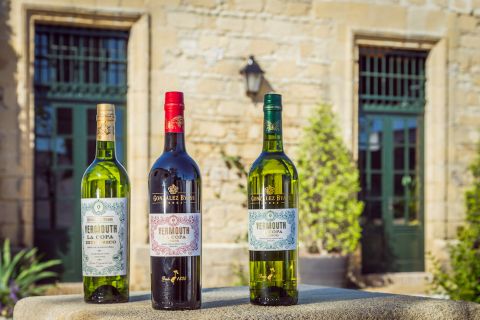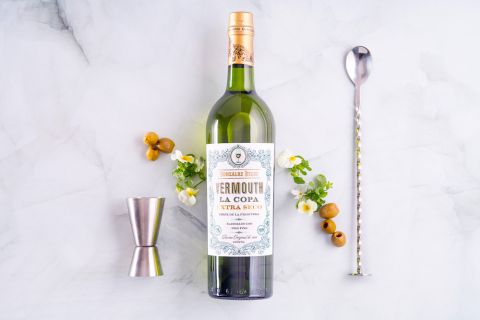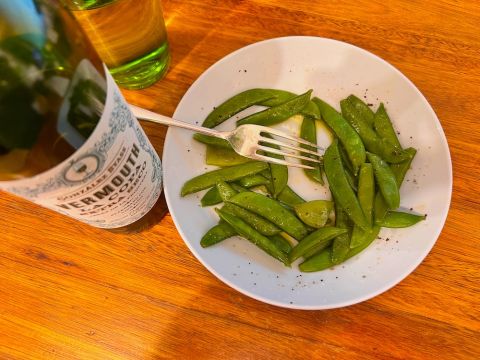If you were a winemaker and the Queen announced that she was travelling over 600 km (370 miles) to visit you, with the express wish to watch the treading of the grapes, but she would arrive two months after harvest, I wonder what you’d do. Perhaps a quick note back to the palace to say, ‘Sorry, HRH, but you’re a couple of months late. You can watch the malolactic conversion, if you’re lucky.’ Or you could send all your people out to buy every bunch of table grapes they could find. Then get those people to strip down and put on a foot-stomping show for the Queen. And then make wine from those 23,000 kg (50,700 lbs) of grapes. And then stick it in a giant barrel, equivalent to 33 sherry butts, and name that barrel after Jesus (naturally: he lived to be 33 years old).
From the time he started his small sherry business (just 10 butts and one vineyard) in 1935, at age 23, Manuel María González proved to be quite the innovator and pretty market savvy. He rapidly adapted to market demands and wasn’t afraid of doing slightly crazy things (the queen in question was Isabelle II of Spain, Manuel was the man who organised the table-grape-stomping episode, and, according to legend, the wine was delicious). By the time of his death in 1887 he’d created the largest-selling Fino brand in the world (still today much loved), Tio Pepe, and built up one of the biggest wine businesses in Spain. All this while doing slightly eccentric things, like collecting bicycles and pianos (rumour has it).
Nowadays we think of González Byass as a Goliath of wine and sherry production with a portfolio of big, famous brands distributed and well-marketed internationally. Being a bit of a small-producer champion, I try to avoid choosing a big brand as wine of the week. It’s not as if they need my pompoms. But this week I’ve made an exception, simply because I loved the wine. And it was so good with food! And it was a little different.
Back in 1884, three years before Manual died, González Byass registered a vermouth brand called La Copa. It was pretty much at the start of the cocktail-inspired vermouth craze that was sweeping the US in the late 19th century. The meticulously preserved González Byass archives have yielded recipes for vermouth made from sherry dating back to 1896, and inventory records show that their vermouth production was alive and well between 1896 and 1926. And then, at some point, it simply stopped. Prohibition, world wars, changing tastes …
But in 2016, González Byass quietly announced that they were reviving their 19th-century recipes and once again producing vermouth under the La Copa brand. They released three vermouths, bearing the original labels: two blancos, one rojo. I love all three, but it’s the Blanco Extra Seco that’s here today because it is strikingly ‘vinous’ rather than ‘vermouthy’, and because, if you love sherry, especially Fino, you will not be able to resist this love child of Fino and wormwood.
It’s a bit of mind-puzzler because it tastes of Fino more than it tastes of vermouth, but the vermouth sweetness and intensity of flavour floods through its ‘fino-ness’ and the result is like looking at Fino through a vermouth filter – it makes you find things in the Fino that you might not have otherwise. It makes you taste Fino upside down and inside out, mentally speaking. The saltiness of the sherry cuts the sweetness (residual sugar is 28 g/l, but it tastes as if it’s less than that). The botanicals add crazy, buzzy, fascinating little detours. So, it’s fun and different from other vermouths, but it’s also pretty serious. It’s dry, puckered with the sweet-bitter green notes of herbs and matcha. It whispers sweet nothings of warm, pan-licking spices and pings bright with lime zest. The texture is like dipping a spoon of coconut cream into your mouth. Despite being 17% alcohol, it’s not heavy, hot or liqueur-like.
The González Byass marketing bumf recommends that you serve it straight up over ice or with a dash of soda. I’m sure they’re right, but I didn’t get around to trying the wine like that. Instead, I got a little bit obsessed with how good this wine was with food. The day I first opened it, I happened to taste it beside an at-my-desk bowl of blanched sugar snap peas drizzled with olive oil. There’s an emoji for the little moment of ‘oh baby yes this is good’ that followed. It instigated a trip to the shops and a plethora of testing (everyone who walked through the door had to give an opinion, including a bemused courier).
This Fino-salty vermouth is close-your-eyes simple perfection with sweet green beans and peas. You name it: popped edamame pods, baby broad beans, sweet sugar snaps, bright green French beans or long-legged rugged runner beans blanched al dente and drenched in grass-green olive oil with a crunch of salt and black pepper.
Take it up a notch, and it is a quirky but utterly delicious brunch pairing: miso-and-mirin scrambled eggs topped with fresh coriander and finely sliced spring onions. Not yet seasonal, but steamed asparagus with tarragon beurre blanche was buttery, soft-green-liquorice-y back-and-forth resonance with the buttery, soft-green-liquorice-y notes of the wine. We bought a chicken-and-tarragon pie from our village butcher, and this vermouth was a way better match than any of the white wines we tried alongside. I didn’t make it, but I suspect it would be beautiful with the classic French spring dish ‘petits pois à la française’. I reckon it would be pretty good with green shakshuka as well as cold roast lamb in a wrap with green-chilli-mint sauce. Someone should try and let me know!
Perhaps it’s something to do with this time of year, the northern-hemisphere cross-over months, when late winter seems to seep grey and heavy into early spring, and you can feel the ‘green’ of life wanting to push through, but the tired, cold, gutter-ragged clouds of winter still litter the surface of life. Bright white wines feel too bright white. Red wines drag you away from the bright light you’re craving. But I’ve found that this vermouth – singing of salty sea and bright light and bright green and new herbs and baby-pea/pea-shoot sweetness, set into the bitterness of wintergreen and wormwood, offset by the sweet warmth and comfort of coconut and vanilla – straddles this inter-seasonal dissonance.
There is strength in numbers. In addition to being available at a number of very reputable UK and US independent wine merchants, this wine is available in Australia, New Zealand, South Africa, Belgium, Germany, Spain and Sweden as well as Slovakia, Croatia, Estonia and Armenia. The cheapest offers in the UK are £15.45 from Alcohol Emporium and £15.60 from Nickolls & Perks, but it’s available from at least 10 other wine merchants. In the US, the best offer (for a 75-cl bottle; halves are also available) is from Warehouse Wines & Spirits in New York for $22.99.
Members can find notes on another 100+ vermouths in our tastings note database.

















